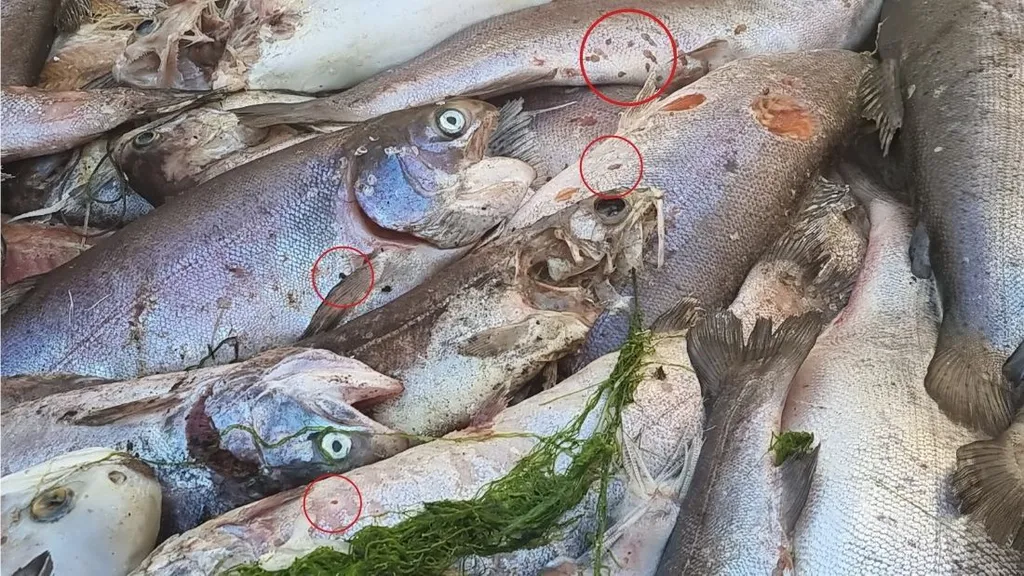In the ongoing battle against sea lice in salmon aquaculture, a new study published in *Evolutionary Applications* suggests that the industry’s reliance on submerged cages to avoid infestations might be inadvertently driving the evolution of deeper-swimming lice. The research, led by Lowri Angharad O’Neill of Deakin University’s Sustainable Aquaculture Laboratory, highlights a concerning trend: salmon lice from submerged cages may be producing larvae that prefer deeper waters, potentially undermining the effectiveness of this preventive strategy.
Salmon lice, or *Lepeophtheirus salmonis*, are a persistent threat to salmon farming, capable of rapidly evolving resistance to chemical treatments. As chemical controls have become less effective, the aquaculture industry has turned to preventive measures like depth-based farming, where fish are kept in submerged cages to reduce exposure to lice, which typically congregate near the surface. However, O’Neill’s study raises questions about the long-term sustainability of this approach.
The research team collected adult female lice from commercial salmon farms using both standard (0–20 meters) and submerged (20–40 meters) cages. They then reared the first-generation larvae under controlled conditions and tested the vertical positioning of over 11,000 copepodid larvae in pressure columns simulating a depth of 10 meters. The results were striking: larvae from standard cages were more likely to ascend (35% vs. 23%) and less likely to sink (19% vs. 27%) compared to larvae from submerged cages.
“This suggests that vertical swimming behavior may be heritable,” O’Neill explained. “Submerged cages could be selecting for lice that are better adapted to deeper swimming, which might eventually enable them to evade depth-based interventions.”
The commercial implications of these findings are significant. If lice continue to evolve deeper swimming behaviors, submerged cages may lose their effectiveness, forcing the industry to seek alternative solutions. This could lead to increased research and development in other areas, such as genetic resistance in salmon or innovative physical barriers.
Moreover, the study underscores the importance of anticipating evolutionary responses in pest management strategies. “Understanding how lice adapt to our interventions is crucial for developing sustainable and effective control methods,” O’Neill noted. “We need to stay ahead of the curve to protect both the industry and the environment.”
As the aquaculture sector grapples with these challenges, O’Neill’s research serves as a reminder that nature is always evolving—and so must our strategies to manage it. The study not only sheds light on the potential pitfalls of current practices but also opens the door to new avenues of research and innovation in the fight against sea lice.
The findings, published in *Evolutionary Applications*, were led by Lowri Angharad O’Neill of the Sustainable Aquaculture Laboratory (SALTT) at Deakin University’s School of Life and Environmental Sciences in Geelong, Victoria, Australia.

